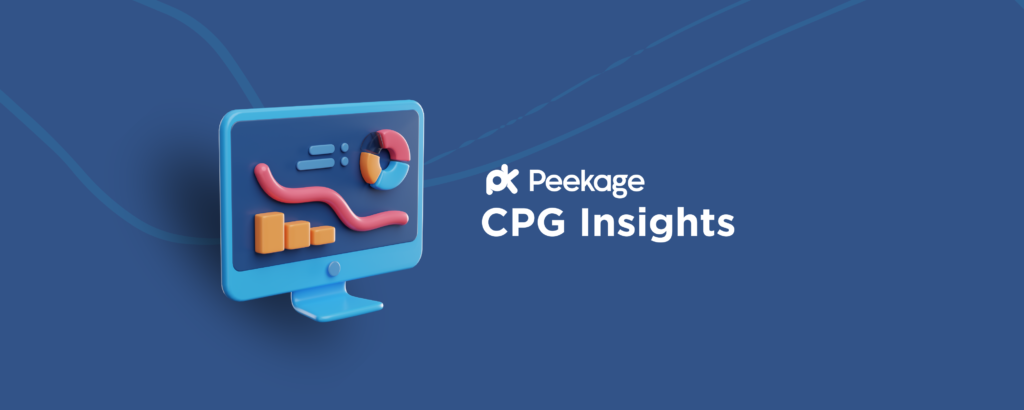In today's hyper-competitive marketplace, businesses face a daunting challenge: understanding what drives consumers to choose one product over another. Without this crucial knowledge, companies risk developing products that miss the mark, wasting marketing budgets on ineffective campaigns, and ultimately losing market share to more savvy competitors.
The consequences of ignoring consumer behavior are dire. Brands that fail to connect with their target audience find themselves struggling with low sales, poor customer retention, and a damaged reputation. In an era where consumer preferences change at lightning speed, falling behind in understanding your customers can lead to disaster for even the most established companies.
But there's hope. Consumer behavior research offers a powerful solution to this problem. By understanding your target audience's mindset, you can uncover the hidden motivations, preferences, and pain points that influence purchasing decisions. This comprehensive guide will walk you through the essentials of consumer behavior research, equipping you with the tools and knowledge to transform your business into a customer-centric powerhouse. From tried-and-true methodologies to cutting-edge techniques, we'll explore how to harness the power of consumer insights to drive innovation, boost sales, and cultivate lasting customer loyalty.
What is Consumer Behavior Research?
Consumer behavior research is the systematic study of how individuals, groups, and organizations select, purchase, use, and dispose of goods, services, ideas, or experiences to satisfy their needs and wants. This field of study combines elements from psychology, sociology, anthropology, and economics to provide a holistic understanding of consumer decision-making processes.
By gaining insights into these processes, brands can develop more effective marketing strategies that resonate with their audience, improve product design, enhance customer experiences, and ultimately drive growth and profitability.
Key Areas of Focus in Consumer Behavior Research:
Consumer behavior research encompasses a wide range of interconnected areas, each providing valuable insights into how and why consumers make purchasing decisions. The following key areas of focus help researchers and marketers better understand and predict consumer behavior:
- Decision-making processes: Analyzing steps from need recognition to post-purchase evaluation.
- Influencing factors: Examining personal, psychological, social, and cultural impacts on choices.
- Consumer psychology: Understanding motivations, perceptions, attitudes, and learning processes.
- Market segmentation: Identifying distinct consumer groups based on shared characteristics.
- Brand loyalty and relationships: Studying brand attachments and drivers of repeat purchases.
- Information processing: Exploring how consumers interpret and respond to marketing messages.
- Digital behavior: Analyzing online shopping patterns, social media influence, and e-commerce trends.
- Cross-cultural consumer behavior: Comparing consumption patterns across different cultures.
- Ethical and sustainable consumption: Investigating eco-friendly choices and ethical purchasing decisions.
- Experiential marketing: Studying the impact of brand experiences on consumer perceptions and loyalty.
The Importance of Consumer Behavior Research
Understanding consumer behavior is essential for businesses across all industries. Here's why:
- Improved Product Development
By knowing what customers want and need, companies can create products that better meet market demands. This research-driven approach leads to innovations that resonate with consumers and reduces the risk of product failure.
- Effective Marketing Strategies
Insights into consumer preferences and habits enable businesses to craft more targeted and impactful marketing campaigns. This leads to higher conversion rates and more efficient use of marketing budgets.
- Enhanced Customer Experience
Understanding customer behavior helps in designing better user experiences, both online and offline. This can lead to increased customer satisfaction, higher retention rates, and positive word-of-mouth recommendations.
- Competitive Advantage
Companies that truly understand their customers can differentiate themselves from competitors and capture a larger market share. This deep understanding allows for unique positioning and value propositions.
- Increased Customer Loyalty
Studies show that 70% of buying experiences are based on how customers feel they are being treated. By meeting customer needs more effectively, businesses can build stronger relationships and foster brand loyalty. This leads to repeat purchases, higher customer lifetime value, and a stable customer base.
- Pricing Optimization
Consumer behavior research aids in determining optimal price points based on perceived value. This helps companies maximize profitability while remaining competitive in the market.
- Risk Mitigation
By studying consumer behavior, businesses can better predict market trends and consumer reactions to new products or changes. This demand forecasting and foresight helps in avoiding costly mistakes and adapting strategies proactively.
- Resource Allocation
Understanding consumer behavior allows for more efficient distribution of marketing and budgets. Companies can focus resources on areas that will have the greatest impact on consumer decisions and satisfaction.
- Personalization
Consumer behavior insights enable tailored offerings and communications to individual consumers. This personalization can significantly improve engagement and conversion rates across various touchpoints.
- Social Impact
Research into consumer behavior informs strategies for promoting responsible consumption and sustainability. It's been reported that 55% of consumers are more likely to buy from eco-friendly brands with sustainability policy.
This allows businesses to align with consumer values and contribute positively to society while maintaining profitability.
Methods of Consumer Behavior Research
Researchers employ various methodologies to gather and analyze consumer behavior data. These methods can be broadly categorized into quantitative, qualitative, and hybrid approaches, each offering unique insights:
a) Quantitative Research Methods
Quantitative methods in consumer behavior research focus on collecting numerical data that can be statistically analyzed. They are useful for testing hypotheses and identifying patterns across large populations.
1. Surveys and Questionnaires
- Online surveys
- Phone interviews
- In-person questionnaires
2. Experimental Research
- Controlled studies to test specific variables
- A/B testing in digital environments
3. Data Mining and Analytics
- Analysis of large datasets from various sources
- Big data analytics to reveal patterns and trends
- Social media sentiment analysis
4. Neuroimaging and Biometric Research
- Using technology to measure physiological responses to stimuli
- Eye-tracking studies
- fMRI (functional Magnetic Resonance Imaging) scans
b) Qualitative Research Methods
Qualitative methods aim to gather in-depth insights into consumer motivations, attitudes, and behaviors. They provide rich, descriptive data that helps understand the 'why' behind consumer actions.
5. Focus Groups
- Moderated discussions with small groups of consumers
- Online focus groups and forums
6. Observational Research
- In-store behavior tracking
- Online shopping pattern analysis
- Participant observation
7. Ethnographic Studies
- Immersive research in consumers' natural environments
- Cultural probes and diary studies
8. In-depth Interviews
- One-on-one discussions with consumers
- Semi-structured or unstructured interviews
c) Hybrid Methods
Hybrid methods combine elements of both quantitative and qualitative approaches, providing a more comprehensive understanding of consumer behavior.
9. Product Testing and Sampling
- Allowing consumers to try products and provide feedback
- Beta testing for digital products
- Using platforms like Peekage, facilitating this process for consumer brands by offering product sampling in home (IHUTs)
10. Mixed Methods Research
- Combining quantitative and qualitative approaches
- Triangulation of data from multiple sources
Each method has its strengths and limitations. Quantitative methods provide statistical reliability and generalizability, while qualitative methods offer depth and context. The choice of method depends on the research objectives, budget, time constraints, and the nature of the information sought. Often, a combination of methods yields the most comprehensive insights into consumer behavior.
Key Factors Influencing Consumer Behavior
Understanding the various factors that influence purchasing decisions is crucial for effective consumer behavior research. These factors can be categorized into five main groups:
1. Personal Factors
- Age and life-cycle stage
- Occupation and economic circumstances
- Personality and self-concept
- Lifestyle and values
- Gender identity
Personal factors significantly impact consumer preferences and choices. For instance, younger consumers often prioritize technology and convenience, while older consumers might focus more on quality and value. Income levels and occupation can determine purchasing power and brand preferences.
Example: A 65-year-old retiree chooses a cruise vacation package over an adventure tour.
This decision reflects their age, life-cycle stage, and potentially their economic circumstances.
2. Psychological Factors
- Motivation
- Perception
- Learning
- Beliefs and attitudes
- Decision-making processes
Psychological factors play a crucial role in shaping consumer decisions. A consumer's perception of a brand can be influenced by advertising, word-of-mouth, and personal experiences. Motivation drives consumers to fulfill their needs and desires, while learning from past experiences impacts future purchasing decisions.
Example: A consumer motivated by health and wellness may perceive organic products as superior and learn to choose brands that emphasize natural ingredients.
3. Social Factors
- Reference groups
- Family
- Roles and status
- Social media influence
- Peer recommendations
Social factors, including family, reference groups, and social class, significantly influence consumer behavior. In the digital age, social media has become a powerful force, with consumers often relying on reviews and recommendations from their online networks.
Trend: The rise of influencers on platforms like Instagram and TikTok has led to significant shifts in consumer preferences and buying patterns.
4. Cultural Factors
- Culture and subculture
- Social class
- Cultural trends and values
- Globalization effects
Cultural factors provide a broad context for consumer behavior. They shape overall preferences, communication styles, and decision-making processes. As markets become increasingly global, understanding cross-cultural consumer behavior has become essential for many brands.
Example: A U.S. company adjusts its menu to offer more vegetarian options when expanding to India. This reflects the cultural values and dietary preferences prevalent in Indian society.
5. Situational Factors
- Physical surroundings
- Time constraints
- Purchase purpose
- Mood and conditions
Situational factors can have a significant immediate impact on consumer behavior. For example, a crowded store might deter purchases, while a limited-time offer could encourage impulse buying.
Example: A shopper buys a more expensive umbrella during a sudden rainstorm. The immediate weather condition (physical surroundings) influences their purchasing decision.
Understanding these factors helps researchers design more effective studies, interpret results in a meaningful context, and enables brands to develop targeted marketing strategies. It's important to note that these factors often interact and influence each other, creating complex patterns of consumer behavior.
Challenges in Consumer Behavior Research
While consumer behavior research offers numerous benefits, it also comes with its share of challenges:
| Challenge | Description | Potential Solutions |
| Data Privacy Concerns | Consumers may be hesitant to share personal information. | Implement robust data protection measures and be transparent about data usage. |
| Rapidly Changing Consumer Preferences | Consumer trends can shift quickly, making research outdated. | Conduct frequent, agile research to stay up-to-date. |
| Multichannel Consumer Journeys | Tracking behavior across various touchpoints can be complex. | Use integrated analytics tools and cross-channel attribution models. |
| Cultural Differences | Global markets require understanding diverse cultural contexts. | Employ local experts and conduct culture-specific research. |
| Unconscious Biases | Consumers may not always be aware of their true motivations. | Use implicit association tests and observational research methods. |
Emerging Trends in Consumer Behavior Research
As technology and society evolve, so do the methods and focus areas of consumer behavior research. Here are some current trends shaping the field:
- Advanced Data Analytics
- Big Data: Leveraging large datasets to uncover patterns and insights.
- AI and Machine Learning: Predicting behavior and personalizing experiences.
- Real-time analytics: Providing instant insights for rapid decision-making.
- Predictive Analytics: Employing advanced algorithms to forecast future consumer behavior.
- Digital Behavior Analysis
- Social Media Analysis: Studying interactions and sentiments on social platforms.
- Mobile Behavior Tracking: Analyzing the mobile-first consumer journey.
- Cross-device tracking: Understanding consumer behavior across multiple devices.
- Neuromarketing and Biometric Research
- Brain imaging: Using fMRI and EEG to study neural responses to marketing stimuli.
- Eye-tracking: Analyzing visual attention and engagement.
- Facial expression analysis: Measuring emotional responses to products and ads.
- Advanced Biometric Sensors: Understanding subconscious consumer responses.
- Ethical and Sustainable Consumption
- Eco-friendly product preferences: Studying the impact of sustainability on choices.
- Ethical brand perception: Analyzing how company values influence consumer loyalty.
- Circular economy behavior: Researching consumer participation in recycling and upcycling.
- Personalization and Hyper-Targeting
- Micro-segmentation: Tailoring experiences for highly specific consumer groups.
- Dynamic pricing strategies: Studying the impact of personalized pricing.
- Content personalization: Analyzing the effectiveness of individualized marketing messages.
- Emerging Technology Adoption
- Voice Commerce: Investigating the impact of voice-activated devices on shopping habits.
- Augmented and Virtual Reality: Exploring how AR and VR influence consumer perceptions.
- Internet of Things (IoT): Studying how connected devices affect consumer behavior.
- Behavioral Economics Integration
- Nudge theory application: Researching subtle influences on consumer choices.
- Decision architecture: Analyzing how choice presentation affects outcomes.
- Cognitive biases in consumption: Studying systematic errors in consumer thinking.
- Cultural and Global Consumer Research
- Cross-cultural analysis: Comparing consumer behavior across different cultures.
- Glocalization studies: Examining how global brands adapt to local markets.
- Diaspora marketing: Researching consumption patterns of immigrant communities.
- Experience Economy
- Customer journey mapping: Analyzing the entire consumer experience lifecycle.
- Experiential retail: Studying the impact of immersive shopping experiences.
- Brand communities: Researching how shared experiences influence consumer loyalty.
- Privacy and Data Ethics
- Consent and transparency: Analyzing consumer attitudes towards data collection.
- Privacy-preserving analytics: Developing methods for insights without compromising privacy.
- Trust economy: Studying how data practices impact brand perception.
- Blockchain for Data Management: Implementing technology to ensure data integrity and consumer control.
These emerging trends are reshaping how researchers understand and predict consumer behavior. They offer more nuanced, real-time insights while also presenting new challenges in data interpretation and ethical considerations. As the field continues to evolve, integrating these trends with traditional research methods will be crucial for a comprehensive understanding of consumer behavior.
Applying Consumer Behavior Research Insights
Once businesses have gathered and analyzed consumer behavior data, the next crucial step is applying these insights effectively. Here are key ways companies can leverage consumer behavior research:
- Product Innovation and Development: Use insights to create or improve products based on consumer needs. For example: Peekage enables brands to conduct targeted product testing and gather valuable feedback directly from consumers.
- Targeted Marketing and Messaging: Craft more effective campaigns by tailoring messages to specific consumer segments. Case study: A leading beverage company used consumer behavior research to successfully target health-conscious millennials, significantly increasing sales.
- Pricing and Sales Optimization: Determine optimal pricing based on perceived value and willingness to pay. Identify and address bottlenecks in the sales funnel to improve conversion rates.
- Customer Experience Enhancement: Improve customer support, user experience design, and loyalty programs based on observed behavior and preferences. Implement personalized recommendations and responsive customer service to boost retention rates. 64% of consumers say that shared values are the primary reason they have a relationship with a brand.
- Brand Positioning: Refine brand messaging to resonate with target consumers and stand out in the marketplace.
- Market Segmentation: Identify distinct consumer groups with similar characteristics, allowing for more targeted strategies across all business functions.
- Trend Forecasting: Use historical consumer data and current behavior patterns to predict future trends and stay ahead of market shifts.
- Competitive Analysis: Understand how consumers perceive and interact with competitors, informing strategic decisions and identifying opportunities for differentiation.
Ethical Considerations
While leveraging consumer data, it's essential to address privacy concerns and adhere to ethical guidelines:
- Obtain explicit consent from consumers
- Anonymize data when possible
- Use secure methods for data storage and analysis
- Be transparent about data collection and usage practices
- Comply with relevant data protection regulations (e.g., GDPR, CCPA)
By responsibly applying real-time consumer behavior insights across these areas, businesses can make more informed decisions, improve their offerings, and build stronger relationships with their customers.
Conclusion
In today's dynamic marketplace, consumer behavior research is more critical than ever. By gaining a deep understanding of what drives consumer decisions, businesses can create products that truly meet customer needs, develop marketing strategies that resonate, and build lasting relationships with their target audience.
As technology continues to evolve, so too will the methods and capabilities of consumer behavior research. Companies that stay at the forefront of these developments and consistently apply consumer insights to their strategies will be best positioned for success in the ever-changing world of consumer behavior.
FAQs
1. What are the objectives of consumer behavior research?
The objectives of consumer behavior research are to understand how and why consumers make purchasing decisions, identify factors influencing their choices, predict future buying patterns, and develop strategies to meet consumer needs and preferences. This research helps businesses optimize marketing efforts, improve product development, and enhance customer satisfaction.
2. What are the 5 stages of consumer behavior?
The five stages of consumer behavior are:
- Problem Recognition: Realizing there is a need or want.
- Information Search: Looking for information about products or services.
- Evaluation of Alternatives: Comparing different options.
- Purchase Decision: Choosing and buying the product.
- Post-Purchase Behavior: Reflecting on the purchase decision and its outcomes.
3. Who studies consumer behavior?
Consumer behavior is studied by marketers, businesses, researchers, psychologists, and economists to understand purchasing patterns and influence marketing strategies.
4. What are the 4 P's of consumer Behaviour?
The 4 P's of consumer behavior are:
- Product: The item or service that meets a consumer's need or desire.
- Price: The cost of the product, affecting its perceived value and purchasing decision.
- Place: The distribution channels through which the product is made available.
- Promotion: The marketing activities used to inform and persuade consumers about the product.
5. What type of research is consumer behavior?
Consumer behavior research is a type of market research that combines qualitative and quantitative methods to study how and why consumers make purchasing decisions, including their motivations, preferences, and buying patterns.
References
- What is Research? Definition, Types, Methods and Process, Idea Scale,
https://ideascale.com/blog/what-is-research/ - Consumer Qualitative Research Techniques, Explorer Research,
https://explorerresearch.com/consumer-qualitative-research-techniques/ - What Is Consumer Motivation? (Consumer Psychology 101), LRW Online,
https://lrwonline.com/perspective/consumer-psychology-101-what-is-motivation/ - Understanding consumer buying behavior, NOLDuS,
https://www.noldus.com/blog/understanding-consumer-buying-behavior




